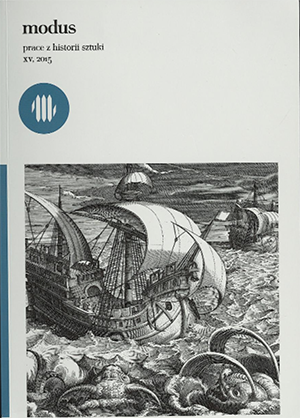Łaźnia i ogród w rezydencji Zygmunta Gonzagi margrabiego Myszkowskiego w Pińczowie
The Baths and Garden in the Residence of Margrave Sigismund Gonzaga Myszkowski at Pińczów
Author(s): Aleksander StankiewiczSubject(s): History, Fine Arts / Performing Arts, Cultural history, Architecture, Visual Arts, Modern Age, 16th Century, 17th Century, Sociology of Art
Published by: Wydawnictwo Uniwersytetu Jagiellońskiego
Keywords: Garden art;Polish art;architecture and iconography;
Summary/Abstract: The present paper is the first attempt in Polish art historiography at reconstructing the appearance and operation as well as the symbolic message of the bathsat Pińczów, which had functioned in the gardens of the Pińczów castle, erected at the behest of Margrave Sigismund Gonzaga Myszkowski by the architect Santi Gucci and his workshop between 1591 and 1605. The appearance of the Pińczów residence can bere constructed thanks to prints with views of the town and castle from the times of theso-called Swedish deluge, made on the basis of drawings by Erik Dahlberg and late eighteenth-and early nineteenth-century cadastral plans as well as architectural remnants and extant buildings. The seat of the Pińczów Entail consisted of a castle built on a hilltop surrounded by a wooded deer park and an Italian-style geometric garden enclosed with a fence with pavilions at the foot of the hill. A specially laid out stream run from the castle through the garden and the town square, where its waters flowed through a fountain, setting it in motion, and continued towards the Nida River.The designer of the Pińczów residence also took care of its surroundings: on the neighbouring hill he erected St Anne's Chapel. It commemorated the jubilee of the year1600 and was used by St Anne's Literary Brotherhood as a place of worship, apart from being an important landmark in the surroundings of the castle. The concept of the garden and the partial development of the grounds resulted from late sixteenth-century theory of architecture and gardening, as formulated by the contemporary architects, poets and thinkers. The description of the Pińczów baths was recorded in a pamphlet by Simon Pistorius entitled Wizerunek [Depiction of the Pińczów Baths], published in 1611and dedicated to Mikołaj Koryciński, a secretary to the king. This extensive text gives a detailed description of the baths, including their movable sculptures which offered drinks to guests, sprinkled them with hot or cold water and played melodies. These solutions have been discussed in the present paper with relation to the late sixteenth- and early seventeenth-century inventions in automatic and hydraulics. A comparison with the treatiseson the above-mentioned topics, by such authors as Heron of Alexandria, Agostino Ramelli, Giovanni Battista Aleotti, Giambattista della Porta, Salomon de Causa, among others, as well as descriptions of other, sometimes surviving garden installations, suggests that the Pińczów baths were one of numerous establishments of this kind that providedent ertainment to its users. At the same time, as all buildings of this kind, the baths had an own iconographic programme which referred to the myth of Actaeon and Artemis. An ample set of inscriptions decorating the building carried a moralizing message and also alluded to the advantages and disadvantages of having a wife.The above analysis has shown that the Pińczów baths were among the most interesting establishments of its kind in Central Europe, combining sculpture with automatic and hydraulics, and that they were well ahead of other similar constructions known to have existed in royal and aristocratic palaces in the Commonwealth of Both Nations in the first half of the seventeenth
Journal: Modus. Prace z historii sztuki
- Issue Year: 2015
- Issue No: 15
- Page Range: 161-186
- Page Count: 26
- Language: Polish

